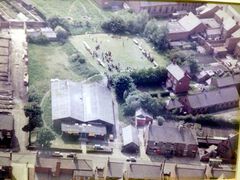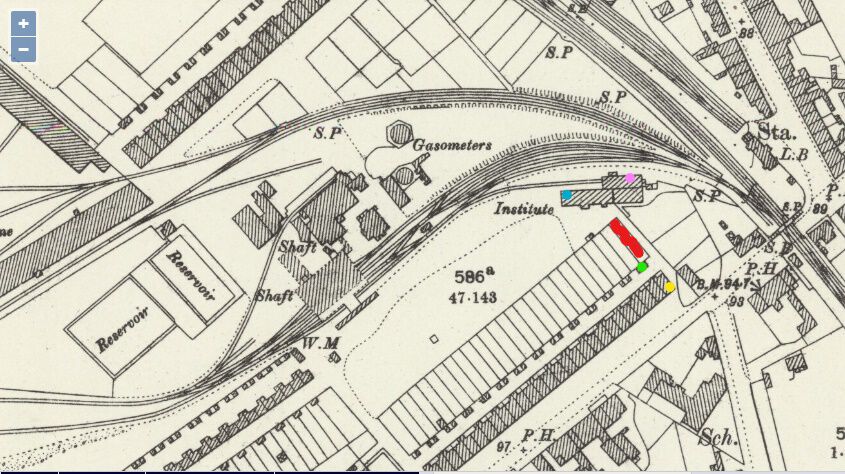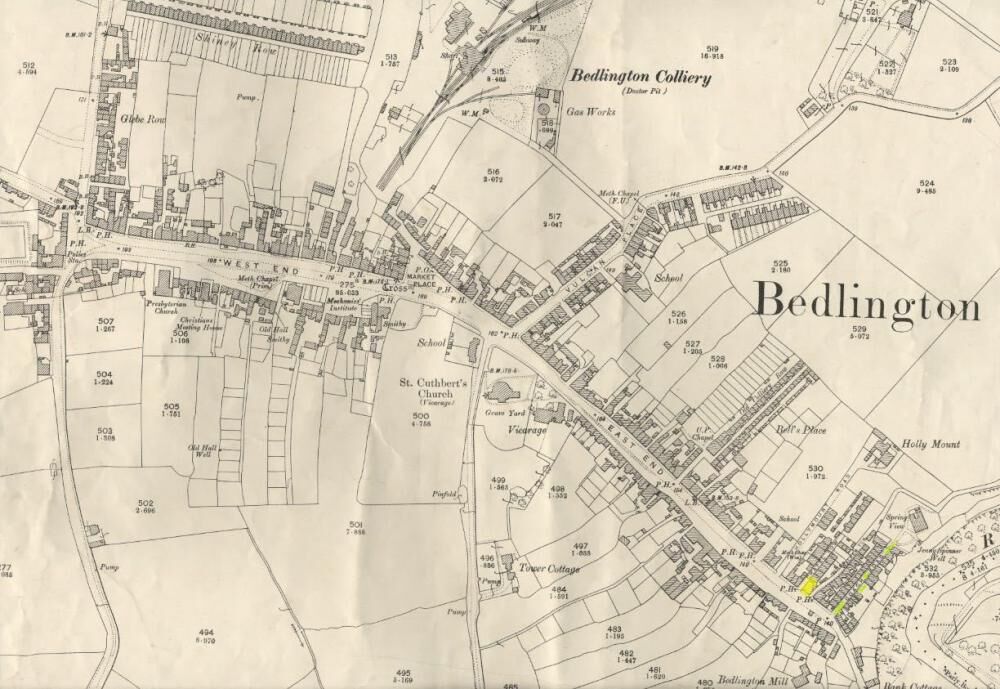.jpg.cdd7f8371d17e2f2f2e2a0e21e02f727.jpg)
Canny lass
Supporting Members-
Posts
3,615 -
Joined
-
Last visited
-
Days Won
417
Content Type
Forums
Gallery
Events
Shop
News
Audio Archive
Timeline
Everything posted by Canny lass
-
-
This week's quiz: 1. What does a cricket umpire signal by raising one arm horizontally? 2. Which writer was imprisoned because of his relationship with Lord Alfred Douglas? 3. A strobilus is another name for what? 4. What was the occupation during the French revolution of a tricoteuse? 5. When referring to radio waves what do the initials AM stand for? 6. Which island separates the two principal parts of Niagara Falls? 7. In which film did Bob Hoskins play Eddie Valiant? 8. Who won the women’s Olympic 100 metres in 1992? 9. Which terrier is the largest of the terrier breeds? 10. In mythology what happened if you drank the water of the River Lethe? 11. For every seven white keys on a piano how many black keys are there? 12. The deficiency of which vitamin can cause rickets? I’ll bet you didn’t know …. Queen Christina of Sweden had a 10 cm long cannon which she used to fire cannonballs at flies! Answers on Thursday.
-
-
Answers to last wek's quiz: 1. Roderic (Rod) Evans 2. Judy Garland 3. Brighton and Hove Albion 4. Social Democratic Party (SDP) 5. Marsupial 6. Tegucigalpa 7. The Potteries 8. Barnes Wallis 9. 1.5 miles 10. Lloyd George 11. Barium 12. Full of woe You lot are getting too good at this! Going to make them more difficult!
-
This week's quiz: 1. Who was the original lead singer with heavy rock band Deep Purple? 2. Who was Liza Minelli’s famous mother? 3. Which football league club used to play at Goldstone Ground? 4. Roy Jenkins was the founder of which political party? 5. What type of creature is a ‘flying phalanger’? 6. What is the capital of Honduras? 7. What name is commonly given to the area around Stoke-on-Trent? 8. Who invented the bouncing bomb (and no, it wasn’t Bobby Ball)? 9. Over what distance is the Classic horse race ‘The Oaks’ run? 10. Who coined the phrase “a land fit for heroes to live in”? 11. Which reactive metal is represented by the symbol Ba? 12. If Monday’s child is fair of face what is Wednesday’s child? I’ll bet you didn’t know …. Queen Elizabeth I was the first English queen to see herself in a mirror. She banned them from court as she aged. Answers on Thursday
-
.thumb.jpg.7493ddab4a696108cf2b849323d3c155.jpg)
A Pit Institute c1950s.jpg
Canny lass commented on Alan Edgar (Eggy1948)'s gallery image in Historic Bedlington
-
.thumb.jpg.7493ddab4a696108cf2b849323d3c155.jpg)
A Pit Institute c1950s.jpg
Canny lass commented on Alan Edgar (Eggy1948)'s gallery image in Historic Bedlington
Last part of the institute building, to the far right, must be what's noted as "policeman's dwelling" on the drawing. Would I be right in thinking that this policeman was the 'collry poliss' rather than a member of the constabulary. I know that the colliery policeman at Netherton (Geordie Collis) was employed by the Howard Pit and he had a colliery house but he wasn't a 'real' policeman. We used to sing a song about him: I wish I was a poliss, a big fat poliss Wi feet like Geordie Collis, the big fat poliss. Kids can be cruel! -
New quiz! 1. Charles Rolls founded Rolls Royce in 1906 but what aviation record did he set in 1910? 2. In which year was Lord Mountbatten killed by the IRA? 3. If you were described as an ectomorph what would you be? 4. What is a young male zebra called? 5. Which football club folded in 1992 after 66 years in the League? 6. Who designed the Volkswagen car? 7. What is the country home of the Marquess of Bath? 8. How many furlongs in a mile? 9. In which conflict did Prince Andrew fly a helicopter? 10. In which sport could you have a York Round and a Hereford Round? 11. What name is given to expressions like ‘catch the town drain’ and ‘tasted two worms’? 12. How many eggs does a peacock lay in a year? I’ll bet you didn’t know …. Russian maps used to show Moscow a few miles away from its actual position to confuse guided-missile programmers. Answers on Thursday!
-
I know the feeling! I'm the same about Hollymount. It's killing me not being able to get to a decent library because of the travel restrictions for 'people of a certain age'.
-
I agree. I've never considered the primary purpose of the Mechanics-, or any other, institute as purveyors of alcoholic beverages (though clearly, this has occurred at some time. For me, it's an educational- rather than a drinking establishment. It's obviously been an important feature of Bedlington life for many years and worth finding out about. Start a topic. There,s loads of questions I could ask.
-
From one researcher to another, it’s always worth looking a second time at the nine tenths of the one percent of what has previously appeared to be absopletely nothing to do with the subject being researched. Getting someone else to take a second look is pure genius! Good luck with the research. Keep us informed! The Victorian times in Bedlington are soooooooooo very interesting, judging by the census books. On the question of Mechanics Institute vs. Institute, it would appear that many MI:s became simply institutes. I have no facts as such but I’ve wondered if it might reflect: a) a widening of the availability of knowledge to other than ‘mechanics’, so to speak. b) A linguistic phenomenon of shortening. Language is lazy! It doesn’t want to jump hurdles to get out of the mouth so Mechanics Institute is shortened to Institute. In Netherton, that shortening process went one step further. We simply called it the ‘tute’. On a more serious note, were the Mechanics Institutes always licensed premises or did that come later?
-
https://www.iwm.org.uk/memorials/item/memorial/52152 Shows that Bedlington Mechanics Institute was still active in 1921 when Joe Caine was president and unveiled the WWW1 memorial plaque, later salvaged from the Bedlington institute and presented to to Beamish Museum in 1979. There is a photo of this plaque on the Beamish site, which for some reason I am unable to access at the minute. However, here's a link to it on another site http://www.newmp.org.uk/detail.php?contentId=6449 which shows that the plaque was comissioned by the Mechanics Institute.
-
I think we might be discussing the wrong Mechanics Institute in relation to the extension plans. I’ve had difficulty locating the Mechanics Institute, as depicted in the drawing, anywhere on the map of Bedlington. The Block Plan shown in the bottom right corner of the drawing doesn’t remotely resemble the area around the old Court House. If so were the case then "Front Row Cottages" would be in the main street and the "lime shed" would be the Sun Inn. Initially, I thought the plan for the extension may have been intended for the Mechanics Institute in the Market Place but this would have meant that the MI was in Muggers Neuk, rather than the Market Place for any extension to the west to be possible. Intrigued by the “footpath to station” in the Block Plan, I started looking at Bedlington Colliery A pit rather tha Bedlington Colliery Dr.Pit. The drawing makes no specification as to which Bedlington Colliery it refers. OS maps of the time always refer to both simply as "Bedlington Colliery. Bedlington Colliery A pit also had an Institute at that time. On this map from 1897 the institute is situated at the end and rear of Front Row (later South Row). It is found behind the gardens and outside toilets of those houses and there is an adjoining building at the rear of the institute - possibly the lime shed. The layout of all these five elements: houses (yellow), toilets (green) and gardens (red), institute (blue) and lime shed (pink) correspond to the block plan in the drawing. It’s also just a short walk to the station. The institute is still there on maps from 1924. It would appear, comparing the drawing of 1895 and the map of 1897 (revised from 1896) to the block Plan shown on the drawing, that the reading room has been added as two porches are clearly evident on both.
-
-
... and, does anybody know anything about the "Lime Shed" to the rear of the building or the "footpath to station" shown bottom right?
-
I'm wondering if we have the right Mechanics Institute here? In 1860 the Bedlington Colliery Mechanics Institute was in the Market Place, a stones throw from the pit.
-
I agree wholeheartedly! The right hand side of Dene House is much earlier than the left which is why I said it may be an extension to an earlier building. It’s interesting to learn that the house had a stable. Could that have become the office block? That building, as can be seen from the photo has undergone several changes: The central, upstairs window has been removed and the two doors are a later addition as evidenced by the dividing upright and lintels, which seem to be much newer than the window lintels. It’s possible this has been an archway, wide enough for a carriage, leading to a small stable yard – possibly the walled area behind and to the side of the house with a single storey covered area on the side nearest the river, as shown in the first photo. It wasn’t uncommon to find married accommodation above the stables, which would explain the windows. I might add, that the advert you mention states that there are 80 years left on the lease, suggesting that the house is about 20 years old in 1757 (Leasehold is generally 99 years).
-
You are so good at this 'colouring in' thing! You should give classes.








.jpg.d9f9f19e392e775b4dee8c40de5dfe33.jpg)